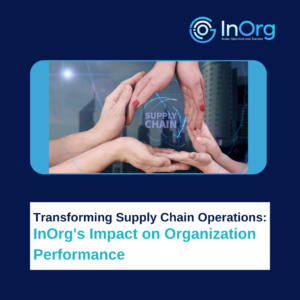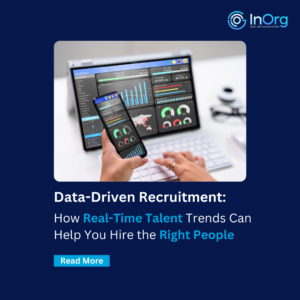Business is not as it was a few years ago, owing to the rise of artificial intelligence . AI, which helps businesses increase productivity and make better choices, is driving this transformation. One of the fields where AI is having the greatest impact is workforce strategy. This article discusses how AI may help to develop your workforce strategy and key topics regarding the future of work.
The Role of AI in Workforce Strategy:
- AI and Its Applications: An Overview
Artificial intelligence is the simulation of human intelligence processes done by machines. According to a CIGI publication, AI is defined as a single set of technologies that structure digitally encoded learning algorithms that will help the algorithms to improve their function . Several technologies in the field can be attributed to AI, including:
- Machine Learning: Algorithms learn from data without explicit programming, allowing them to identify patterns and make predictions.
- Natural Language Processing: Enables computers to understand and interpret human language, facilitating communication between humans and machines.
- Robotics: Combines AI with physical capabilities, creating robots that can automate tasks or interact with the physical world.
These tools enable computers to learn from data, recognize patterns, and make informed decisions.
In the context of workforce strategy, AI plays a multifaceted role:
- Recruitment and Talent Acquisition: AI-powered algorithms can analyze resumes for keywords and skills, match candidates to job descriptions with higher accuracy, and even conduct initial interviews through chatbots. This expedites the hiring process and ensures a more efficient talent pipeline.
- Employee Development and Upskilling: AI can identify skill gaps within the workforce by analyzing performance data and employee profiles. It then recommends personalized learning paths, whether it’s suggesting relevant online courses or providing real-time feedback during training exercises through virtual reality simulations.
- Predictive Analytics: AI analyzes historical data to predict workforce trends. This can include attrition rates, performance metrics, and even potential skills gaps based on industry trends. These insights inform strategic decisions around training programs, talent retention strategies, and future workforce planning.
2. Benefits of AI in Workforce Strategy
Enhanced Decision-Making: AI-driven analytics provide HR professionals with actionable insights. This data-driven approach allows for more informed decisions regarding resource allocation, workforce planning, and succession management.
Improved Recruitment Efficiency: Automated screening processes can reduce the time spent on repetitive tasks like filtering resumes. Recruiters can then focus on building relationships with potential candidates and assessing their cultural fit within the organization.
Personalized Learning and Development: AI tailors training programs to individual needs and learning styles. This can involve providing microlearning modules for quick skill acquisition or personalized development plans for long-term career growth.
- Increased Productivity: Studies by McKinsey suggest AI can automate repetitive tasks, potentially boosting worker productivity by up to 25%. This frees human employees to focus on higher-value activities like strategic thinking and problem-solving.
- Improved Talent Acquisition: AI-powered recruitment tools can screen resumes and conduct initial interviews, reducing time spent on unqualified candidates. This can lead to a 20% faster hiring process, according to a study by Forbes.
- Enhanced Employee Engagement: AI can personalize learning and development programs, catering to individual employee needs. This can boost employee engagement by up to 30%, as reported by Gartner.
- Reduced Costs: AI can automate tasks like data analysis and scheduling, leading to cost savings of up to 15% in HR operations, according to a study by Deloitte.

Efficient Performance Management: AI continuously monitors performance metrics, identifies high-performing employees, and suggests recognition or advancement opportunities. It can also flag potential performance issues, allowing for early intervention and targeted coaching.
1. Traditional vs. AI-Powered Performance Management: A Data-Driven Comparison
Traditional methods like Balanced Scorecard (BSC), Key Performance Indicators (KPIs), and Objectives and Key Results (OKRs) offer a foundation for evaluation but face limitations in today’s dynamic work environment:
- Subjectivity: Reliance on subjective evaluations can lead to bias and unfairness, with 70% of employees feeling their reviews are unfair.
- Lagging Indicators: Metrics often focus on past performance, hindering progress on strategic goals.
- Time-Consuming: Manual reviews consume significant time, with managers spending up to 20 hours on preparation.
- Limited Agility: Traditional methods struggle to adapt to changing business needs.
AI addresses these limitations and enhances performance management by:
Real-Time Insights: AI analyzes data for continuous feedback aligned with goals.
Predictive Analytics: Identifying potential issues and development opportunities proactively.
Reduced Bias: Objective data analysis minimizes bias in evaluations.
Increased Engagement: Personalized feedback boosts employee motivation.
Quantifying the Benefits:
- 20-30% improvement in employee performance
- 50% reduction in time spent on reviews
- Increased employee retention, saving up to 21 times the salary.
3. Challenges of AI in the Workplace:
Ethical Considerations: As AI becomes more integrated, ethical questions arise. Bias in algorithms can lead to unfair hiring practices or inaccurate performance evaluations. Privacy concerns regarding employee data collection and usage need to be addressed. Additionally, ensuring transparency in AI decision-making processes is crucial.
Change Management: Implementing AI requires effective change management. Employees may fear job displacement or resist new technologies due to unfamiliarity. Communication and training programs that emphasize the benefits of AI and how it can augment human capabilities are essential.
4. Preparing Your Workforce for AI:
Education and Training: Upskilling employees is essential for success in the AI-driven workplace. Invest in AI literacy programs to ensure everyone understands the technology’s benefits and limitations. Training on how to collaborate effectively with AI tools will also be crucial.
Collaboration Between Humans and Machines: The future of work is not about machines replacing humans, but rather about humans and machines working together. Encourage collaboration and focus on the symbiotic relationship between human expertise and AI capabilities. Humans excel in soft skills like creativity, critical thinking, and emotional intelligence – areas where AI is still under development.
5. Examples of AI in the Workplace:
Real-world examples showcase the diverse applications of AI in workforce management:
- Chatbots for Employee Queries: AI-powered chatbots can handle routine HR inquiries, freeing HR professionals for more complex tasks.
- Predictive Analytics for Retention: AI can analyze employee data to identify flight risks early on. This allows for proactive retention efforts, such as personalized career development opportunities or addressing potential sources of dissatisfaction.
- Performance Feedback Algorithms: AI can provide real-time performance feedback based on data from various sources, including performance metrics, customer interactions, and peer reviews. This allows for a more objective and continuous feedback loop.
6. The Future of Work: AI-Driven Agility:
- Empowering Innovation: AI can assist with tasks like data analysis and trend identification, freeing up human creativity for brainstorming new ideas and developing innovative solutions.
- Reskilling and Continuous Learning: The pace of technological change will necessitate a focus on continuous learning and reskilling. AI can personalize learning pathways and identify emerging skill sets needed for future success.
Human-Centric Approach:
While AI streamlines processes and provides valuable insights, the human touch remains crucial. Here’s why:
- Emotional Intelligence: Building relationships, motivating teams, and fostering a positive work environment are areas where AI currently lags behind humans. Emotional intelligence is irreplaceable in effective leadership and team management.
- Creativity and Problem-Solving: AI excels at identifying patterns and making data-driven decisions, but it struggles with creative problem-solving and generating original ideas. Human ingenuity will still be essential for tackling complex challenges.
- Empathy and Customer Service: The ability to understand and respond to human emotions is crucial for building trust and rapport with clients and colleagues. Empathy remains a core human strength that AI cannot replicate.
Conclusion
AI is not a distant future; it’s a present reality transforming workforce strategies. To navigate this evolving landscape, businesses need to embrace AI thoughtfully. Here are some key takeaways:
- Focus on human-machine collaboration: Leverage AI’s strengths in data analysis and automation while capitalizing on human expertise in creativity, problem-solving, and emotional intelligence.
- Invest in upskilling and continuous learning: Prepare your workforce for the future by providing opportunities to develop the skills needed to thrive alongside AI.
- Prioritize ethical considerations: Ensure fairness, transparency, and responsible data collection practices in all AI implementations.
By embracing AI thoughtfully, organizations can create a workforce that is adaptable, skilled, and ready to succeed in the age of intelligence. The future of work will be a collaborative dance between humans and machines, each playing a vital role in driving innovation and achieving organizational goals.





